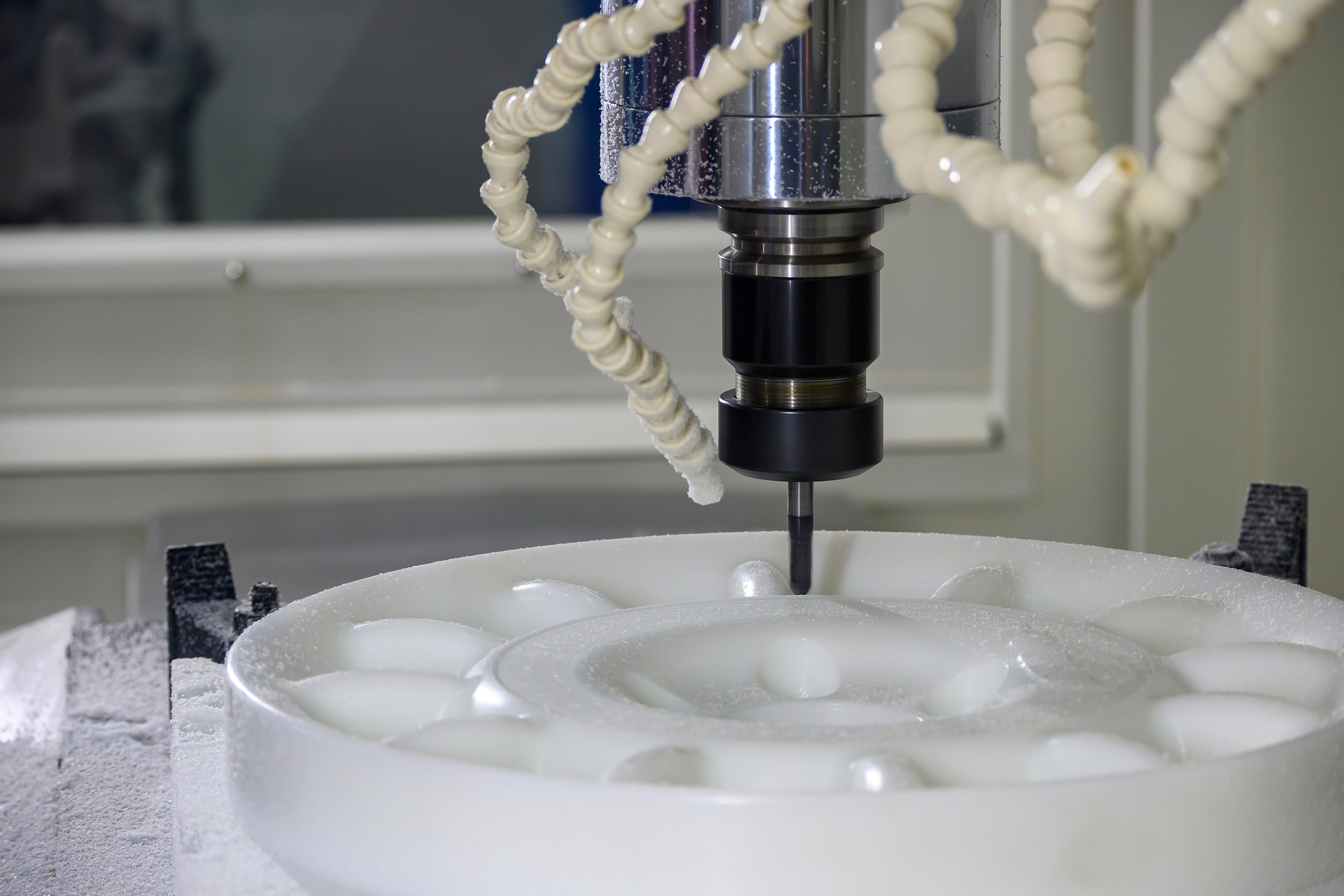In semiconductor polishing, CMP retaining rings are critical for securing wafers and ensuring process performance. Material choice is fundamental, with polymers like PEEK providing durability and chemical resistance. This article outlines the pivotal role of these rings and how the right material and design impact semiconductor manufacturing’s efficiency and precision.
Key Takeaways
- CMP retaining rings are critical for securing semiconductor wafers during polishing, with material choice impacting efficiency and defect rates. High-performance polymers like PEEK and TECATRON CMP are favored for their strength, chemical resistance, and thermal stability.
- The design and shape of CMP retaining rings are crucial, influencing slurry contact, process stability, and optimization. Custom shapes cater to various wafer sizes, and the use of quality materials ensures longevity and reduced maintenance costs.
- Selecting the right CMP retaining ring involves considering material properties, ring design, and the potential for contamination or mechanical failure. Additionally, choosing a reliable supplier ensures adherence to quality standards and the ability to respond to industry fluctuations and demand increases.
The Role of CMP Retaining Rings in the Semiconductor Industry

CMP retaining rings are the unsung heroes in the semiconductor industry. They secure the semiconductor wafer in place during the polishing process, ensuring efficient and precise wafer polishing. However, finding the right material for these rings poses a significant challenge. The ideal material should be able to maintain its dimensional stability across various temperatures and pressures and withstand harsh chemicals present in CMP slurries.
The effectiveness of the CMP process and the occurrence of wafer-level defects are significantly impacted by the choice of ring material. This is why high-performance polymers like PEEK are frequently used in the manufacturing of these rings. They not only secure the wafer and prevent damage but also enhance the efficiency and precision necessary for wafer polishing.
Material Selection for CMP Retaining Rings
Materials for CMP retaining rings are not chosen on a whim. They are carefully selected based on their properties and the specific requirements of the CMP process. Notably, materials such as PEEK, TECATRON CMP, and Techtron PPS have found favor in the industry, each presenting distinct advantages.
Here’s a detailed examination of these materials, giving you a peek inside their composition.
PEEK: High-performance Polymer
Recognized for its exceptional durability and resistance to wear and chemicals, PEEK, or PolyEther Ether Ketone, stands as a high-performance polymer. It’s not just the strength of PEEK that makes it stand out; its high purity makes it suitable for various applications, including:
- CMP retaining rings in the semiconductor industry where contamination is a major concern
- Aerospace components
- Medical implants
- Automotive parts
Peeking into the world of high-performance polymers, PEEK’s versatility and reliability make it a popular choice in many industries. As one peeks into its numerous applications, it becomes clear why this material is so highly valued. With a quick word peek, you can easily grasp the importance of this polymer.
In terms of wear resistance, PEEK outperforms its peers, offering up to three times better resistance than PPS. Its excellent characteristics include:
- Abrasion resistance
- Friction resistance
- Dimensional stability
- Low Outgassing
- Chemical resistance
These qualities make it a top choice for CMP retaining rings.
Moreover, PEEK can withstand high temperatures, even exceeding 350˚F (177˚C), making it a popular choice for CMP retaining rings that operate in high-temperature environments, ensuring they perform at their highest point.
TECATRON CMP: A Specialized Solution
In the realm of CMP retaining rings, TECATRON CMP stands out. It was specifically engineered for this purpose and holds a vital role in the semiconductor polishing process. Its benefits are multifold, including:
- Decreasing the number of faulty dies
- Enhancing yield in semiconductor manufacturing
- Reducing waste
- Improving product quality
These benefits have a significant impact on the cost of ownership.
Characterized by its exceptional properties, TECATRON CMP offers several advantages:
- Exceptional abrasion and wear resistance, surpassing the industry standard for PPS
- High-toughness grade material, minimizing the risk of chipping and breakage
- Low outgassing properties, preventing wafer damage caused by released gases
Other Material Options
In the quest for finding the perfect material for CMP retaining rings, other materials have also emerged as potential options. Some of these materials include:
- PPS: a high-performance polymer with exceptional properties such as high strength and chemical resistance
- Polyethylene terephthalate (PET): a viable option that demonstrates superior friction performance compared to PPS
- Semitron® CMP LL5: derived from PET-P, this material provides a wear life that’s up to eight times longer than other materials.
Design and Shapes of CMP Retaining Rings
Not only the material selection but also the design and shape of CMP retaining rings are fundamental to their function. These factors can impact the contact between the material and the slurries, as well as the stability and optimization of the CMP process. Typical designs include insert molded rings and rings crafted with materials providing exceptional processing precision and dimensional stability.
CMP retaining ring shapes are customized to meet specific CMP process needs. They are crafted from materials like PPS and PEEK to secure the wafer during the polishing process, and their shapes can be adjusted to accommodate different wafer sizes. Furthermore, these designs can offer a range of heights and materials to secure the wafer during polishing and protect it from potential damage caused by emerging gases.
Advantages of Using High-Quality CMP Retaining Rings

There are multiple advantages to selecting high-quality CMP retaining rings. They contribute to:
- Reducing defective dies
- Improving yield
- Defect removal
- Minimizing variations in thickness
All of these contribute to enhanced process efficiency in semiconductor manufacturing. By securely holding the wafer during polishing and enabling uniform material removal, they also play a significant role in reducing wafer defects.
In addition to their role in process efficiency and defect reduction, high-quality CMP retaining rings offer a more practical advantage: longevity. They provide a prolonged service life compared to lower quality options, resulting in fewer errors and the ability to planarize a greater number of wafers before requiring a replacement. They also require less maintenance, further reducing production expenses.
Choosing the Right CMP Retaining Ring for Your Application
Choosing the appropriate CMP retaining ring necessitates thoughtful consideration of various factors. Material mechanical properties such as processing precision, dimensional stability, and tribological properties play a crucial role in reducing defects, optimizing the chemical mechanical planarization process, and improving planarization efficiency. But it’s not just about the material. The design of the CMP retaining ring also significantly affects its suitability for a particular application.
While making these considerations, it’s important to be mindful of potential errors. For instance, selecting a material that could contaminate the wafer surface or choosing a retaining ring groove that is close to a shaft or housing’s end could lead to failure.
Choosing the Right Supplier for CMP Retaining Rings
Not only the selection of the right ring is critical, but also choosing the right supplier for CMP retaining rings. A reputable supplier ensures that the rings adhere to industry standards in terms of quality and that they possess the capability to expand production and adjust to industry variations. When choosing a supplier, consider the quality of the rings, the support services provided by the supplier, and the traceability of the material’s manufacturing processes.
The supplier’s adaptability to industry fluctuations is of equal importance. This ensures a consistent supply of retaining rings, particularly during times of high demand or supply chain disruptions. Choosing the appropriate supplier ensures that CMP retaining rings maintain high quality and that the supplier can expand production to accommodate the increasing requirements of the semiconductor industry while maintaining quality standards.
Maintenance and Replacement of CMP Retaining Rings
For optimal performance, it is vital to maintain and replace CMP retaining rings timely. Typically, a standard PEEK ring lasts for approximately 12 pad changes, a PPS ring for about 4 pad changes, and a TECAPEEK CMP ring may endure up to 14 pad changes. Maintenance involves ensuring that the wafer is contained within the carrier during polishing and verifying the ring’s proper functioning and alignment.
To carry out these tasks, specialized tools such as retaining ring pliers or snap ring pliers are required. Regular maintenance and timely replacement not only prolong the life of the CMP retaining rings but also ensure optimal performance and minimum defects.
Summary
In the intricate world of semiconductor manufacturing, CMP retaining rings play an essential role. The selection of the right material, design, and supplier are crucial in ensuring process efficiency, reducing defects, and prolonging service life. Whether it’s PEEK, TECATRON CMP, or other materials, the choice depends on the specific requirements of the CMP process. Regular maintenance and timely replacement further ensure that the rings perform at their best, contributing to the overall success of semiconductor manufacturing. Contact Atlas Fibre today!
Frequently Asked Questions
What are CMP retaining rings?
CMP retaining rings are an integral part of the CMP process, functioning to hold the wafer under the carrier during polishing and to achieve uniform material removal.
What’s the difference between a snap ring and retaining ring?
The difference between a snap ring and a retaining ring is that snap rings are commonly referred to as retaining rings and can have a stamped, tapered design, whereas retaining rings are a type of fastener consisting of a metal ring with open ends that can be “snapped” into place.
What are the two main types of retaining rings?
The two main types of retaining rings are internal retaining rings, which are placed into a groove in a housing, and external retaining rings. They are used for securing components on shafts or in bores.
What is the purpose of retaining rings?
The purpose of retaining rings is to hold components onto a shaft or into a bore by creating a shoulder that keeps parts in place, especially on smooth, round surfaces.
What is chemical mechanical planarization used for?
Chemical mechanical planarization is used for topography planarization and device structure formation in semiconductor manufacturing. It helps to selectively remove materials for these purposes.
